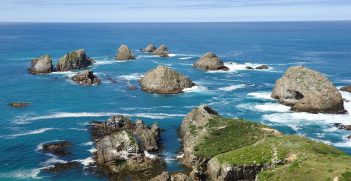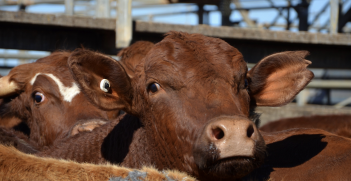Most Read of 2020: Bushfires Have Shaken Australia’s Tourism Industry From Head to Foot

As Australia hopefully emerges from the worst of the 2019/2020 bushfires, it is quickly becoming apparent that the tourism industry has been hit particularly hard. This has rattled Australia’s international image, with local industries being gravely affected.
This article was one of the most read in Australian Outlook in 2020.
Australian bushfires have burnt at least 17 million hectares of land this season. They have taken more than 30 lives of locals, Australian firefighters and, recently, international firefighters. Fires continue to burn around the country. One metric of financial damage, insurance loss, puts a financial cost of the fires at around $1 billion.
An ongoing cost of the fires is their impact on tourism. The Australian Tourism Industry Council estimates that hundreds of millions of dollars damage have been done to the industry in the near term.
Sydney airport has repeatedly closed due to smoke and wind conditions. Canberra airport recently came under direct threat from fire. Australia’s capital city has topped the charts for worst air quality in the world. The Australian Open has had to cancel matches. Slovenia’s Dalila Jakupovic withdrew from the tournament after a smoke-induced coughing fit. Australia’s tourism icon, the koala, faces existential threat.
Images and stories of Australia’s plight have bounced around the globe, generating enormous international support and compassion. They have also had deep implications for the tourism sector, one of Australia’s vital industries.
Tourism Australia has described regions unaffected by fire as “feeling the pinch” of tourists put off by fire and smoke. At national and state levels, there is a sense that tourism is being harmed by incorrect perceptions of the extent of the fires. Federal Tourism Minister Simon Birmingham has cited anecdotal evidence of tourist cancellations in largely “non-affected” areas.
Visit Victoria has demonstrated similar concerns with its two-pronged approach to managing tourism loss around East Gippsland, one of the most affected regions of this fire season. The agency is asking tourists to consider rescheduling, rather than cancelling, trips to fire-affected areas, whilst promoting confidence in travel to non-affected areas. Local business operators in Gippsland report similar issues, with tourists cancelling for safety concerns over fires hundreds of kilometres away.
It is not just news influencing international tourism in the wake of fires. The USA travel advisory has raised travel warnings for Australia to “exercise increased caution” over bushfire and smoke hazards, raising the ire of PM Morrison. The British Foreign Office’s travel advice for Australia is similar, of course. Regardless of the Prime Minister’s protestation, bushfires and smoke are a genuine hazard, and have been particularly fierce this summer.
The image of Australia as a safe international tourism destination has been shaken.
A temporary pause on the digital “Matesong” tourism campaign targeting the United Kingdom is evidence enough. That campaign, casting Australia as a koala-laden safe retreat from the political chaos of Brexit, appeared particularly crass during our domestic troubles.
Like many outcomes of this fire season, its impact on the national tourism industry may take years to be fully realized. Tourist confidence, both domestic and international, will also be shaped by the success of upcoming marketing campaigns, such as Tourism Australia’s $50m to reinvigorate the sector.
Direct impacts of fire on tourism is much easier to see at the local scale. Small town economies have been hit hard. For example, Portside Boat Hire, a small business in Lakes Entrance, East Gippsland, sees 50 percent of its annual income from the period between Christmas and Australia day. On December 29th, Lakes Entrance was evacuated. In NSW, the Braidwood Bakery (famous to Canberra locals) saw its sales down 75 percent due to the King’s Highway closure. The highway, which connects Canberra to Bateman’s Bay and the coast, was closed until mid-January.
These are only two isolated examples, but they represent a much wider story. Australia’s regional areas are full of towns that rely on seasonal tourism and small businesses to stay alive. Braidwood, with its strategic position on the King’s Highway, will surely see enough traffic in the coming year to shore up its summer losses. Yet businesses and locals may still suffer significantly from the loss of income.
I would like to briefly consider Batlow, a township close to my heart. “Famous for apples,” Batlow has been revitalised by the determination of its community to explore new commercial opportunities, including tourism. Likewise, most of the township was saved from fire this season by local firefighters.
Batlow will be rebuilt by its resilient community, and the return of tourism will be critical to its economic recovery. Yet fire has destroyed much of the surrounding land, including the orchards and farms that support both agricultural and tourism industry. The region’s iconic Sugarpine Forest Walk has also burnt. Community members who have driven Batlow’s revitalisation must also navigate the recovery of their personal property and livelihoods. These are all significant barriers to Batlow’s economic recovery, itself vital to the community’s recovery from fire.
This is not unique to Batlow. Fire-affected towns across the region, and across the entire country, grapple with these challenges of personal, financial, community, and economic recovery.
In brief, tourism matters. It matters on a national scale, and international interest matters. It matters, deeply, to the survival of towns and communities scattered across Australia’s regional areas. This bushfire season has disrupted the tourism industry at all of these scales. Australia’s safe tourism image has been rattled, and local industries have been hit hard. The recovery of tourism will be a critical component of bushfire recovery.
Xavier Wilks is an intern with the AIIA National Office, and is in his third year of Bachelor of International Security Studies at ANU.
This article is published under a Creative Commons Licence and may be republished with attribution.




